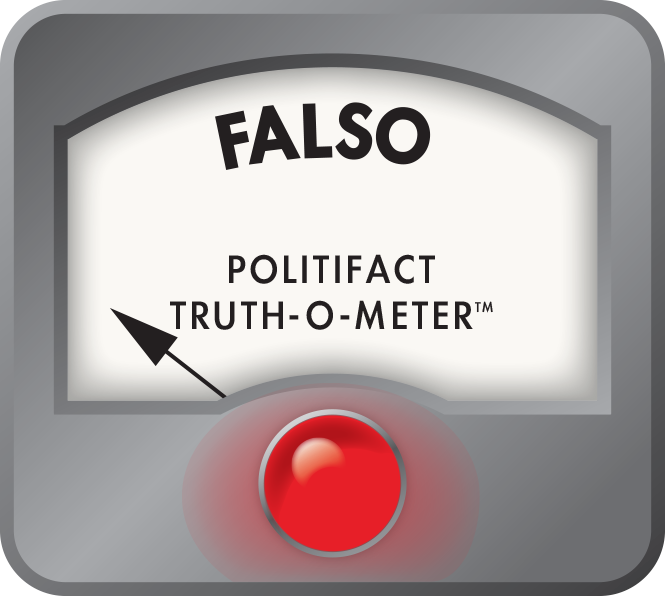Get PolitiFact in your inbox.
Morgan says we're No. 1 in child hunger
Carol Morgan, the Democrat facing Republican John Frullo for a Texas House seat representing Lubbock, says Texas often beats out other states, not always for the better.
"We’re a state of contrasts right now," she said June 25 to the Non-Urban Caucus at the Texas Democratic Paty’s state convention. "We are (rated) No. 1 in business by every business magazine, and I (am) steadfastly committed to maintaining that. But you know, we’re No. 1 in child hunger."
How Texas ranks, in categories great and not-so-great, is often campaign fuel. We’ve noted previously that Texas is No. 1 in wind power, and among the lowest-ranking states for high school graduation rates and mental health care. Texas has the nation’s top share of minimum-wage workers and is also home to the most Fortune 500 companies.
Scoping Morgan’s statement, we came across a Republican rendition of the same concern. Texas Agriculture Commissioner Todd Staples, urging mayors to participate in a summer program providing meals to needy children, said in June 2009: "Texas ranks first in the nation in children who are food insecure."
According to the U.S. Department of Agriculture, "food insecurity" means that at some point in a year, someone in a household went hungry because the household couldn’t afford food. JC Dwyer, state policy director for the Texas Food Bank Network, told us: "It doesn’t mean everyone’s going hungry every night. It doesn’t mean ‘starving.’"
Morgan sent us a write-up on the website of KXAS, the NBC TV affiliate in Dallas-Fort Worth, which says "Texas leads the nation in child hunger." She also pointed us to the Texas Hunger Initiative website, which says "Texas has the highest food insecurity rate among children in the nation." The initiative, based at Baylor University, develops strategies to end hunger across the state.
Neither of Morgan’s cited websites explains what it means to be No. 1 in child hunger.
Dwyer pointed us to data on food insecurity collected by the federal government. Every year since 1995, the U.S. Census Bureau’s Current Population Survey has collected data on food insecurity which the USDA uses to produce a report on its prevalence.
The bureau estimates the rate of food insecurity in households by weighing responses to 18 questions including yes-no queries such as "In the last 12 months did you or other adults in your household ever not eat for a whole day because there wasn’t enough money for food?" Other questions require participants to say how true a statement is, such as "The children were not eating enough because we just couldn’t afford enough food."
Featured Fact-check
About 44,000 households answered the 2008 survey. The USDA Economic Research Service, which analyzes the responses and weights them appropriately to reach conclusions for each state and the nation, concluding that at some time that year 17.1 million — 14.6 percent — of U.S. households were food insecure. About 49 million people lived in food-insecure households, including 16.7 million children.
Looking at combined census data from 2006 through 2008, USDA reported in November that the estimated rate of food insecurity ranged from 6.9 percent in North Dakota to 17.4 percent in Mississippi. Texas had the second-highest rate of food insecurity at 16.3 percent.
But what about focusing on hungry children, as Morgan does?
An earlier USDA report focused on food-insecure households where children were living. Looking at data from 2001 through 2007, the report found 21.5 percent of Texas households with children sustained food insecurity — placing the state first nationally. Neighboring New Mexico had the next most food-insecure households with children, at 21 percent, while New Hampshire had the lowest rate, with 10.1 percent of households with children facing hunger.
In May 2009, Feeding America, a nonprofit national network of more than 200 food banks, had explored a related angle. The network, tapping data from the census bureau and USDA for 2005 through 2007, estimated the share of children facing hunger in each state. Its conclusion: 22.1 percent of Texas children lived in food-insecure households. The Texas rate was followed by that of Tennessee (20.5 percent), South Carolina and Arizona (20.2), and Missouri and Louisiana (20).
The lowest rate? North Dakota at 10.9 percent.
Texas did not have the greatest number of children facing hunger. California, the most populous state, had about 1.6 million food-insecure children. Texas had the second most with about 1.47 million.
Since Morgan made her child-hunger claim, Feeding America has released a new study using census bureau and USDA data from 2006 through 2008. It found that Arkansas had the nation’s highest rate of children facing hunger, at 24.4 percent. Texas was a close second, with 24.3 percent of its children in food-insecure households.
Our sense: It’s most reasonable to stack up the states based on their rates of children in hunger, rather than raw numbers. Based on its rate, Texas was No. 1 in child hunger from 2005 through 2007. It placed a close second to Arkansas in the latest study, but that wasn’t public when Morgan spoke.
We rate her convention statement True.
Our Sources
Texas Department of Agriculture, Video: Commissioner Staples challenges Texas mayors to feed more hungry children this summer, June 9, 2009
United States Department of Agriculture Economic Research Service, Food security in the United States: Key statistics and graphics, updated Nov. 16, 2009
United States Department of Agriculture Economic Research Service, Food insecurity in households with children: prevalence, severity and household characteristics, September 2009
Feeding America, PDF: Child food insecurity in the United States: 2005-2007, issued May 6, 2009
Feeding America, PDF: Child food insecurity in the United States: 2006-2008, issued July 1, 2010
NBC Dallas-Fort Worth KXAS, Mission to end hunger in Texas, June 24, 2010
Baylor University, Texas Hunger Initative website, accessed June 28, 2010
Interview with JC Dwyer, state policy coordinator, Texas Food Bank Network, June 28, 2010
Interview with Carol Morgan, candidate for the Texas House, District 84, June 28, 2010
Interview with Veronica Obregon, chief communications officer, Texas Department of Agriculture, June 28, 2010
Interview with Julia Morse, partnership publicist, Feeding America, June 30, 2010
Browse the Truth-O-Meter
More by Ciara O'Rourke
Morgan says we're No. 1 in child hunger
Support independent fact-checking.
Become a member!
In a world of wild talk and fake news, help us stand up for the facts.


























